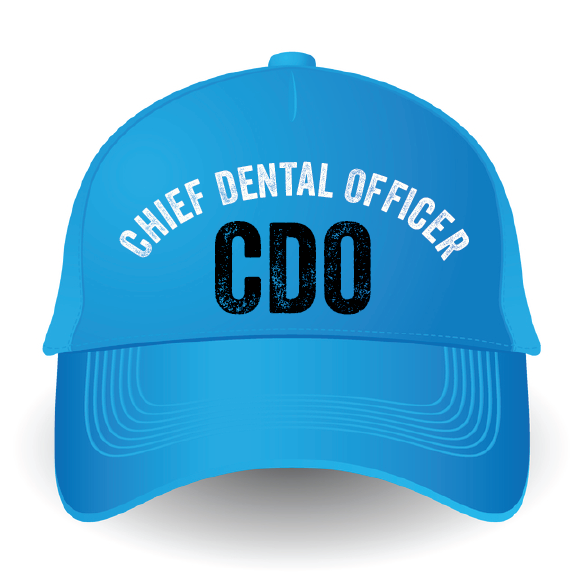In the past twenty years, I have heard of three distinct and different references to the golden age of dentistry. There was the age where dental insurance became a common occurrence in employee benefit packages, there was the age where dentists began to understand occlusion and could reliably rebuild a mouth, and most recently there was the Aesthetic/Cosmetic golden age. It seems a new golden age is always coming or going. I don’t pretend to know much about what defines a golden age in dentistry, but I have noticed that the job description of being a dentist has continued to grow in a way that can and has detracted from the lifestyle of dentists. It seems a new hat is created every five to ten years and dentists must embrace these new hats to experience success.

In the past twenty years, I have seen the development of two new jobs that dentists must gain a fair amount of acumen to have a successful practice. Those two jobs are the marketing specialist and the role of information technology specialist. When I was in dental school paper charts were the standard and less than ten percent of dentists had a website. Of course, dentists can outsource those jobs, but still to make sure they are hiring well they must have enough working knowledge to hire well and evaluate the outcomes of those they hire. It seems that the number of hats a dentist must wear is an ever growing concern. Today, as more dentists begin to embark into the world of employing dentists and dental specialists, the newest hat is coming into existence. This new hat is the one where the dentists must set a clinical vision and cultivate a culture centered around the philosophies of the owners regarding outcomes. In addition to vision, culture, and results the new hat asks the dentists who wear it to develop a scope of practice, decide upon clinical technology, pursue innovation, and support growth and development opportunities for the partners or employee dentists within the group. This job exists in medicine and is commonly called Chief Clinical Officer or Chief Medical Officer, in dentistry it might be called Chief Dental Officer.
In the era where 98% of dentists worked in a “solo” private practice, the dentist was responsible for his or her advanced clinical education, what technology to invest in, what and when to refer, lab communication strategies, which equipment was a worthy investment and on and on. These decisions were not difficult. The only person, the “solo” dentist, had to convince was himself. Fast forward to today where dentists across the nation are rushing into “group” practice. Now the decisions become more difficult. This difficulty is particularly evident when clinical cultures are stitched together through acquisitions. Often the dentists are happy to shed many of the hats they have begrudgingly been wearing day in and day out, only to discover a conflict with how some other dentist wants to do things. But how does the group attend to the seemingly countless requests concerning clinical matters? Does the organization take a hard line and require specific labs, favored technologies, limited supplies, defined rules of clinical engagement? Or, does it bend the other way and not even try to influence clinical matters and let all the clinical personnel decide for themselves every aspect of care?
The glory of medicine is that it is constantly moving forward, that their is always more to learn. The ills of today do not cloud the horizon of tomorrow, but act as a spur to greater effort.” William Mayo
Indeed, both extremes exist in group practice. Both extremes have positive attributes as well as negative. Each extreme lends itself to a variety of clinical cultures. “Clinical culture” is a buzzword that’s hard to define and harder to influence but seems to fit within the purvue of a chief dental officer. Is it better to have an organic clinical culture that grows up around the most dominate clinicians and business partners? Or is it better to set an intentional path toward a desired clinical culture and pursue that destination with vigor? I’m not sure we know enough about how clinical cultures develop and what influence they have on results; financial, clinical outcomes, team engagement and employee satisfaction, to set a course with certainty. Perhaps the better question is: how does an organization center its clinical offerings around the mission and vision of the organization? One option might be to seek to fill the ranks with individuals who buy into the mission and vision of an organization and are happy and willing to pursue those aspirations with enthusiasm (Option A). Another possibility is to have an agreed-upon result and offer clinicians a menu of tested and vetted options that have a known and predictable outcome. Each of these options could then have support systems built around them to allow the clinician to be supported well in the pursuit of results that align with their personal style of dentistry but are congruent with the stated expectations for results (Option B). Option A lends itself best to an employee based system like the Mayo Clinic, and Option B lends itself best to the partnership model where clinicians have opportunities to enter into ownership. Both models need clinical leaders to create, test, innovate, iterate and implement clinical strategies.
The question for organizations: what is a positive variant and what is a negative variant?
Dentistry is a changing, progressing profession that cannot stand still and stagnant. Dentistry will experience variance as it progresses. The question for organizations: what is a positive variant and what is a negative variant? Suppressing all variance will destroy any organization staffed by smart, ambitious, and caring clinicians. At the same time indulging every variation and personal preference of a clinician will also similarly kill a business. The biggest challenge to any group will be to determine what is positive variance and what is negative variance? Without clinical supervision and interpretation, something that looks like a positive variance to a professional business person may, in fact, be a negative and vice versa. As dentistry leans into this new reality, another hat is necessary–the hat of the Chief Dental Officer. The bigger the group, the more important the role will become as the necessity to implement a strategy grows, not to tell clinicians what to do, but rather to support them in the pursuit of what they want to achieve for themselves and the patients whom they serve while supporting their role in the business. The exciting aspect of this is the learning that can and will come. The larger the group, the larger the data set and eventually the better the strategies will become. One day in the future all of the best practices that thousands of dentists, professional managers and consultants have discovered through trial and tribulation will be cataloged and made available to tens of thousands of dentists and teams. Innovation and improvement are coming fast.
